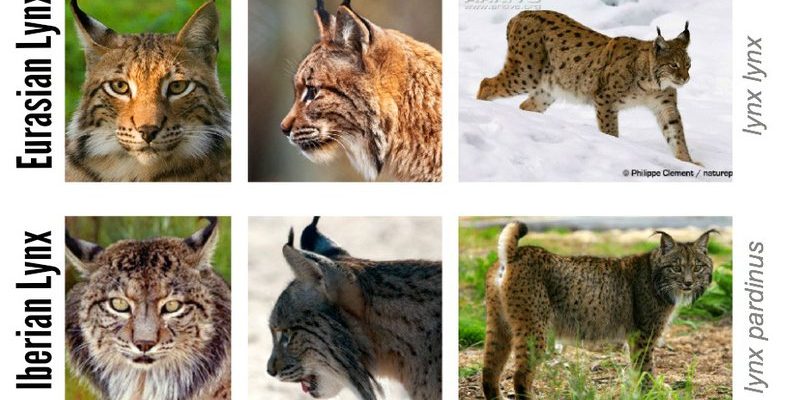![Comparing The Canada Lynx Vs. [Similar Species]](https://gudri.com/wp-content/uploads/2025/06/Comparing_The_Canada_Lynx_Vs___Similar_Species__image_0.jpg)
Let’s dive into comparing the Canada Lynx and Bobcat. Think of it as a friendly rivalry, where each cat has its unique traits and quirks. From their physical characteristics to their hunting styles, every aspect showcases how they’re suited to their environment. So grab a cup of coffee, and let’s unravel the enchanting world of these wild felines.
Physical Characteristics
Both the Canada Lynx and Bobcat have some striking features, but a few key traits set them apart. The Canada Lynx is a bit larger, with long legs and large, furry paws that act like natural snowshoes—perfect for their cold, snowy habitats. Their signature tufted ears and thick, silvery-brown fur help them blend into the forest surroundings. You might think of them as the perfect snow ninjas, stealthy and ready to pounce.
On the other hand, the Bobcat is generally smaller and has a more compact build. Their short, stubby tail is a major giveaway—they look a bit like they’re sporting a funky hairstyle! The fur of a Bobcat features a mix of browns, grays, and even some reddish tones, giving them a more varied appearance. Overall, while the Canada Lynx might be the larger, fluffier cousin, the Bobcat is more diverse in color and appearance.
Habitat Preferences
Where do these cats like to hang out? The Canada Lynx is mostly found in the northern forests of Canada and Alaska, thriving in areas with thick, coniferous trees. They prefer cold climates, where snow covers the ground for much of the year. Think of them as the ultimate winter warriors, using their snowy terrain to their advantage.
In contrast, Bobcats have a broader range and can be found in diverse environments, from forests to deserts. They’re not picky at all! You might find them in rural areas or even near suburbs, where they adapt to varied landscapes. This flexibility allows Bobcats to thrive almost anywhere, making them a common sight compared to their more elusive Canada Lynx cousins.
Diet and Hunting Styles
Now let’s talk about food! Both the Canada Lynx and Bobcat are carnivorous, but their diets differ slightly based on what’s available in their respective habitats. A Canada Lynx loves to feast on snowshoe hares, which make up the bulk of their diet. Their hunting style is all about stealth and patience; they’ll often stalk through the snow, waiting for the perfect moment to pounce.
On the flip side, Bobcats have a more varied diet. They’ll munch on small mammals like rabbits, birds, and even rodents. Their hunting strategy is a bit more versatile. Bobcats can be opportunistic, adjusting their techniques based on what’s around. This adaptability is one reason Bobcats thrive in different environments. Imagine them as the skilled chefs of the wild, mixing up their menu based on the freshest catch!
Behavior and Social Structure
When it comes to behavior, Canada Lynx and Bobcats also have their quirks. Canada Lynx tend to be more solitary creatures, often roaming alone except during mating season. They’re pretty quiet, relying on their keen senses to navigate their snowy worlds, which adds to their mysterious aura.
Bobcats, on the other hand, can be a bit more social. While they are also solitary by nature, they’re often seen in the company of their young or during mating. They communicate more openly, using various vocalizations to signal their presence or defend their territory. When you hear a strange yowling in the night, it might just be a Bobcat expressing its feelings!
Reproduction and Lifespan
Reproduction in both species is fascinating. Canada Lynx typically breed between March and April, and after a gestation period of about two months, a female might give birth to two to four kittens. These little ones are adorable and depend on their mother for quite some time as they learn the ropes of being a predator.
Bobcats have a similar breeding season, with a gestation period of about two months as well. They often have litters of two to six kittens, which are equally cute and playful. Both species see the kittens staying with their mothers until they’re about six months old, after which they head off to find their own territories.
In terms of lifespan, Canada Lynx usually live around 10 to 15 years in the wild, while Bobcats can live a bit longer, sometimes reaching 13 to 18 years. This slight difference might seem small, but it speaks volumes about their adaptability and environmental pressures.
Conservation Status
Lastly, let’s touch on conservation. The Canada Lynx has faced challenges due to habitat loss and climate change, which impacts their snowy habitats directly. They are considered a threatened species in the United States, primarily due to loss of habitat and prey shortages.
Bobcats, however, have managed to maintain a stable population, thanks to their adaptability and wide range. They are classified as a species of “Least Concern” and are often found in healthy numbers. However, even Bobcats face threats from hunting and habitat destruction, reminding us that every wild creature needs our support to thrive.
So, there you have it! The Canada Lynx and Bobcat may share some similarities, but their differences are what make each of them intriguing. From their physical characteristics and habitats to their diets and behaviors, both cats are perfectly adapted to their environments. Next time you think about wild cats in North America, remember the unique stories that each one tells through its life and actions. Whether you’re lucky enough to spot a Canada Lynx or a Bobcat, you’ll appreciate the wild beauty of these incredible creatures even more.

